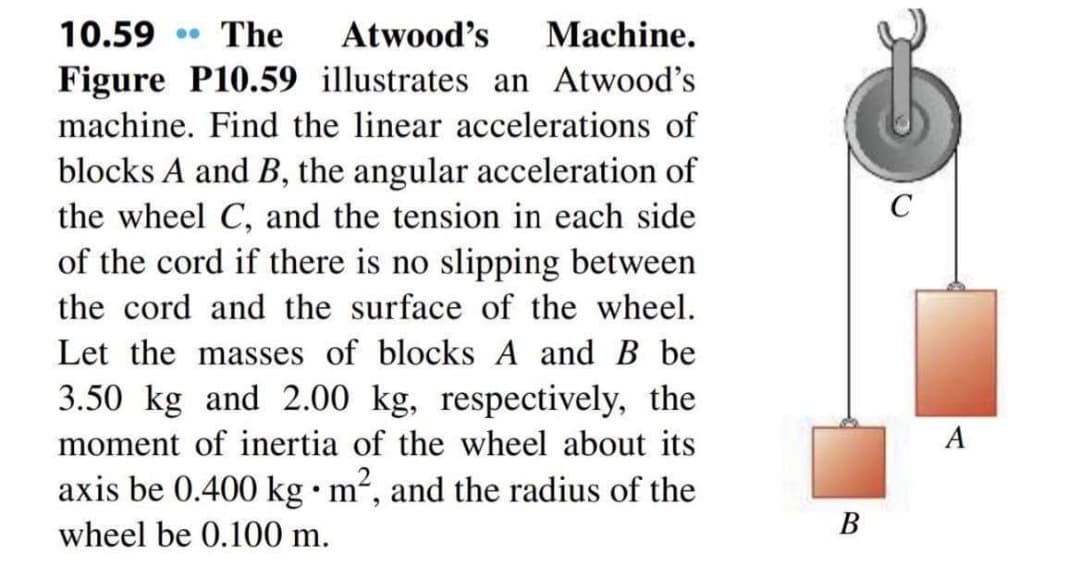10.59 The Atwood's Machine. Figure P10.59 illustrates an Atwood's machine. Find the linear accelerations of blocks A and B, the angular acceleration of the wheel C, and the tension in each side of the cord if there is no slipping between the cord and the surface of the wheel. Let the masses of blocks A and B be 3.50 kg and 2.00 kg, respectively, the moment of inertia of the wheel about its A axis be 0.400 kg•m², and the radius of the В wheel be 0.100 m.
10.59 The Atwood's Machine. Figure P10.59 illustrates an Atwood's machine. Find the linear accelerations of blocks A and B, the angular acceleration of the wheel C, and the tension in each side of the cord if there is no slipping between the cord and the surface of the wheel. Let the masses of blocks A and B be 3.50 kg and 2.00 kg, respectively, the moment of inertia of the wheel about its A axis be 0.400 kg•m², and the radius of the В wheel be 0.100 m.
Related questions
Question
100%
I REPEAT. TYPEWRITTEN ONLY ANSWERS
DO NOT ANSWER IF YOU ALREADY ANSWERED THIS.
DO THIS TYPEWRITTEN ONLY. I'LL UPVOTE
DOWNVOTE IF HANDWRITTEN THANK YOU.

Transcribed Image Text:10.59 . The
Atwood's
Machine.
Figure P10.59 illustrates an Atwood's
machine. Find the linear accelerations of
blocks A and B, the angular acceleration of
the wheel C, and the tension in each side
C
of the cord if there is no slipping between
the cord and the surface of the wheel.
Let the masses of blocks A and B be
3.50 kg and 2.00 kg, respectively, the
moment of inertia of the wheel about its
A
axis be 0.400 kg•m², and the radius of the
wheel be 0.100 m.
В
Expert Solution
This question has been solved!
Explore an expertly crafted, step-by-step solution for a thorough understanding of key concepts.
This is a popular solution!
Trending now
This is a popular solution!
Step by step
Solved in 2 steps with 2 images
